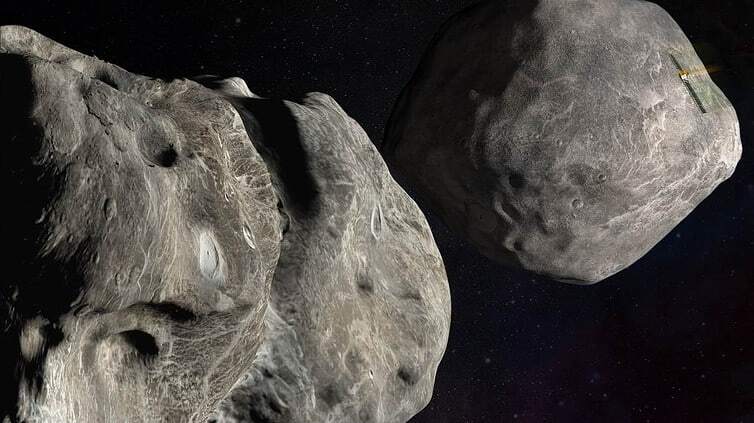3.03.2023
Snooker-style space impacts a viable way to defend against asteroids.

Concept image of the DART spacecraft cruising towards the asteroid Dimorphos / Credit: NASA, Johns Hopkins APL
Last year, a collaboration between NASA and Johns Hopkins University’s Applied Physics Laboratory smashed a US$300 million spaceship into an asteroid about 11 million kilometres from Earth.
Now, they know they could do it again, but with Earth-saving potential.
At the time of the impact the DART (Double Asteroid Redirection Test) project was considered a raging success.
By using the impact of the spacecraft at over 26,000 km/h to ‘nudge’ asteroid Dimorphos’ orbit closer to its parent Didymos, NASA and the APL hoped to prove planetary defence using kinetic energy transference was possible.
Having set an orbit reduction target of seven minutes to confirm the success of their mission. The new orbital path was found to be 33 minutes shorter than before the impact.
Among the five project articles published in leading science journal Nature, researchers are now confident in the ability to use kinetic impact to knock threating asteroids off course.
While no known asteroids are expected to pose a threat to Earth for at least 100 years, the success of the DART mission has NASA optimistic about the future prospects of planetary defence.
The fact that the satellite was launched directly into the Dimorphos asteroid without ‘reconnaissance’ prior to impact, was also not seen to be problematic for future attempts to redirect space bodies.
However they did affirm that prior knowledge of a potentially deadly asteroid impact would be particularly helpful for avoiding a fate akin to the dinosaurs, noting “kinetic impactor technology for asteroid deflection requires having sufficient warning time – at least several years but preferably decades–to prevent an asteroid impact with the Earth.”
“DART’s successful autonomous targeting of a small asteroid with limited prior knowledge is a key first accomplishment on the path to advancing kinetic impactor technology to an operational capability,” they said.
“This first successful step to demonstrate the viability of kinetic impactor technology for planetary defence builds optimism about humanity’s capacity to protect the Earth from an asteroid threat.”
Quelle:COSMOS

